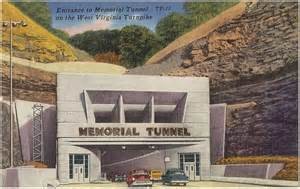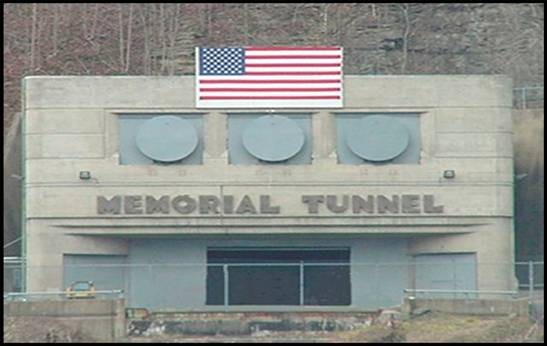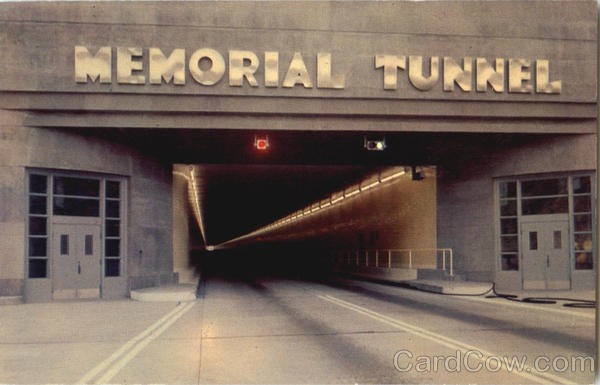West Virginia Memorial Tunnel
Introduction
Text-to-speech Audio
Images
The entrance to the Memorial Tunnel

Entrance to Memorial Tunnel

Interior view of the Memorial Tunnel

Backstory and Context
Text-to-speech Audio
Construction of the Memorial Tunnel started in 1952 and required the movement of 91,000 cubic yards of earth. The tunnel opened to traffic on November 8, 1954, and cost $5 million. The tunnel was the first in the nation to have closed-circuit television monitoring.
In 1976, upgrades to the West Virginia Turnpike began, and by 1983, the narrow width of the tunnel created a problem. The new turnpike was a 4-lane, divided highway which meant that drivers had to merge into the two-lane, two-way traffic configuration of the tunnel. Drivers also had to go to a lower speed limit when entering the tunnel. This resulted in traffic backups during periods of increased traffic, such as holiday travel seasons. Instead of upgrading and expanding the tunnel, a 1.72 miles extension was constructed to serve as a bypass for both the tunnel and the Bender Bridge. The new section of road cost $35 million to complete and required the removal of 10,000,000 cubic yards of earth. In addition, 300,000 tons of coal was removed from the mountain during the construction process. The tunnel closed and the last car would go through the tunnel on July 7, 1987.
In the mid-1990s, the Department of Transportation used the tunnel for smoke, fire, and ventilation experiments. The experiments were to help design better-developed ventilation systems for the tunnels being constructed as part of the Big Dig in Boston. The results of these tests were also integrated into the design of the Channel Tunnel. The Memorial Tunnel Fire Test Program has helped change ceiling materials used in tunnel construction and also, in the use of jet fans for ventilation during construction. Then around 1997, the tunnel became a storage site for the West Virginia Turnpike.
By 2000, the tunnel was chosen to be where the Center for National Response would conduct anti-terrorism training exercises. The current facilities offer a rubble area to simulate collapsed buildings, an emergency egress trainer, and a subway station, complete with 800 feet of track and two subway cars from Boston's Green Line. The tunnel also has a drug enforcement section, a highway tunnel section, complete with a New York City Transit Authority bus, firetrucks, a tractor-trailer and other vehicles, and a 50-car pileup wreck complete with hazardous materials.
Emergency responders from around the country now send their personnel to West Virginia to train in the facility. In all, about 160,000 first responders have been trained by West Virginians who man the training ground. Ted Kramer, the deputy project manager for RPI, the company that was chosen to turn the tunnel into the training site, said, “There’s no other place in the country where you can go into this kind of an environment and do this kind of training.”
Sources
Workman, Jim. "Memorial Tunnel ‘best-kept open secret’ in WV." The State Journal. November 22, 2016. https://www.wvnews.com/statejournal/news/memorial-tunnel-best-kept-open-secret-in-wv/article_f946cdd...
